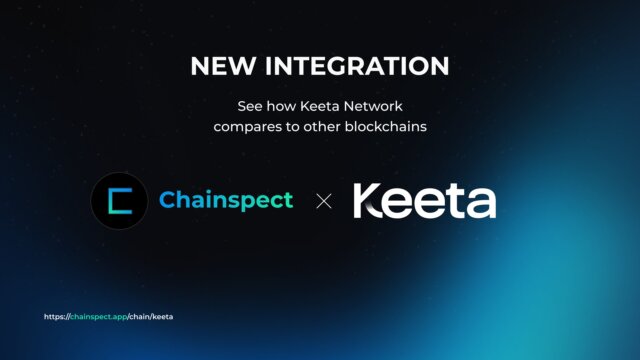- Keeta is a Layer 1 blockchain network designed to bridge the gap between traditional finance (TradFi) and decentralized finance (DeFi).
- The network has a theoretical capacity of 10 million transactions per second (TPS) and settlement times as low as 400 milliseconds.
- The $KTA token, a utility and governance token, is central to Keeta’s ecosystem.
Introduction to Keeta
Keeta is a cutting-edge Layer 1 blockchain network designed to bridge the gap between traditional finance (TradFi) and decentralized finance (DeFi). With its high-performance capabilities, Keeta aims to facilitate seamless, compliant, and secure transactions across multiple blockchains. The network boasts an impressive transaction throughput, with a maximum theoretical capacity of 10 million transactions per second (TPS) and settlement times as low as 400 milliseconds.
At the heart of Keeta’s ecosystem lies the $KTA token, which serves as both a utility and governance token. This tokenization enables participants to create and manage digital or real-world assets with comprehensive control and compliance integrated directly into the protocol. Furthermore, Keeta’s architecture supports trusted Know Your Customer (KYC) providers to issue secure digital certificates for user accounts, ensuring regulatory compliance while maintaining privacy and high-security standards.
As of May 16, 2025, the live price of Keeta (KTA) stands at $0.428358 USD, with a 24-hour trading volume of $9,867,875 USD. The token has experienced a significant uptick, rising 12.23% in the last 24 hours and achieving a market capitalization of $171,343,182 USD.
1. Launch of the $KTA Token
The official launch of the $KTA token marked a pivotal moment for Keeta, signaling the network’s readiness to engage users in its governance and utility functions. As the native token of the Keeta Network, $KTA plays a central role in powering the ecosystem, enabling users to participate in decision-making processes and access various services within the platform.
The introduction of $KTA has not only provided users with a means to engage with the network but has also attracted significant attention from investors and the broader crypto community. The token’s launch coincided with a surge in trading activity, reflecting growing confidence in Keeta’s vision and technological capabilities.
Moreover, the $KTA token’s integration into Keeta’s high-performance Layer 1 network underscores its importance in facilitating fast and secure transactions. With the network’s impressive throughput and low latency, $KTA serves as a critical component in achieving Keeta’s goal of revolutionizing blockchain banking.

2. Listing on Chainspect
Keeta’s recent listing on Chainspect, a platform known for its comprehensive blockchain analytics, has significantly boosted the network’s visibility and credibility within the crypto space. This listing allows users and potential investors to monitor Keeta’s performance metrics, including transaction throughput and block times, providing transparency and fostering trust in the network’s capabilities.
By showcasing its high-performance metrics on Chainspect, Keeta has demonstrated its commitment to scalability, security, and compliance. This move has not only attracted the attention of retail investors but has also piqued the interest of institutional players seeking reliable and efficient blockchain solutions.
The increased exposure resulting from the Chainspect listing has contributed to a surge in demand for the $KTA token, as more users recognize the potential of Keeta’s innovative approach to bridging TradFi and DeFi. This heightened interest has played a significant role in driving the recent price hike of $KTA.
3. Delegated Proof-of-Stake
Keeta employs a Delegated Proof-of-Stake (DPoS) consensus mechanism, which empowers token holders to participate actively in the network’s governance. Through this system, users can delegate their staking power to trusted validators, who are responsible for validating transactions and maintaining the network’s integrity.
This approach not only enhances the network’s security and efficiency but also ensures that governance power remains in the hands of active participants. By incentivizing token holders to engage in the decision-making process, Keeta fosters a more democratic and decentralized ecosystem.
The DPoS mechanism has been instrumental in attracting users who value transparency and community involvement. As more participants stake their $KTA tokens and contribute to the network’s governance, the demand for the token increases, further driving its price upward.
4. DAG Structure and High Throughput
Keeta’s adoption of a Directed Acyclic Graph (DAG) structure sets it apart from traditional blockchain networks. This architecture allows for parallel processing of transactions, significantly increasing the network’s throughput and reducing latency.
The DAG-based approach eliminates the bottlenecks associated with sequential transaction validation, enabling Keeta to process a high volume of transactions simultaneously. This innovation is crucial for supporting real-world applications that require fast and efficient transaction processing, such as cross-border payments and financial services.
Keeta’s technological advancements have garnered attention from developers and enterprises seeking scalable and compliant blockchain solutions. The network’s ability to handle a large number of transactions with low fees and high speed has contributed to the growing interest in the $KTA token, influencing its recent price surge.
Read Also: Maple Finance Price Spike: What’s Driving the Surge?
Disclaimer: CryptopianNews shares this for learning and info only. It’s not meant to be financial or investment advice. Crypto markets change a lot and move quickly. Investing in them can be risky. You should always look into things yourself. Talk to a trained financial advisor before making any choices about investing.
- Ripple Prime Launch: $1.25B Hidden Road Power Move - October 24, 2025
- Binance Faces $8B Decline as Bitcoin & Ethereum Slip - October 16, 2025
- BNB Price Prediction: Can Binance Coin Reach $2,000 by Year-End as Bulls Return? - October 9, 2025

